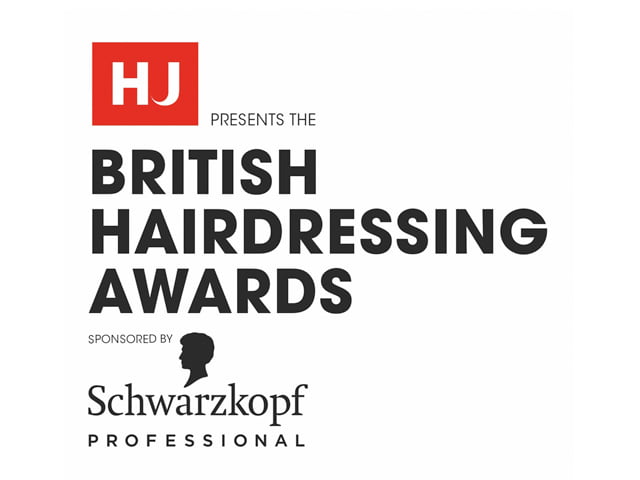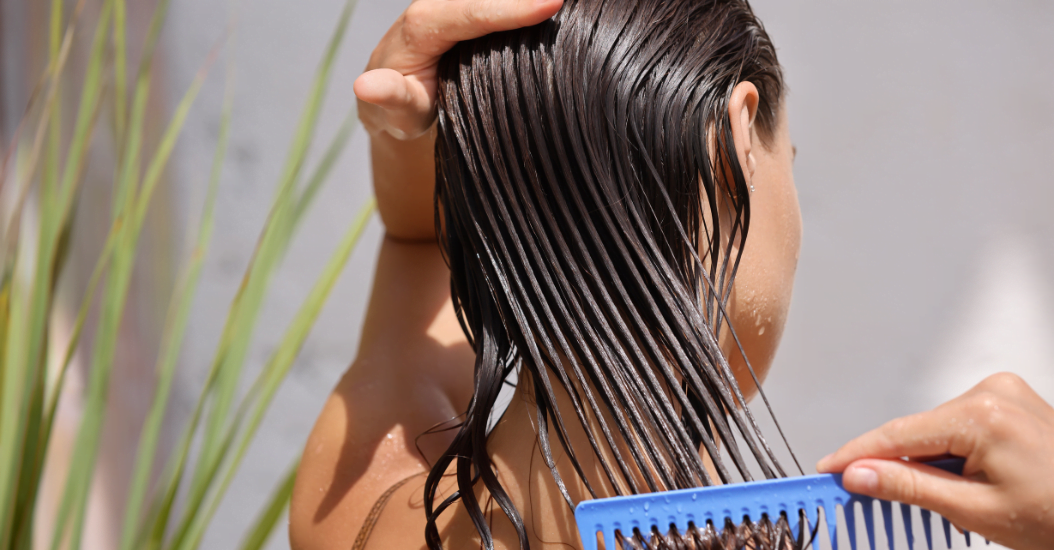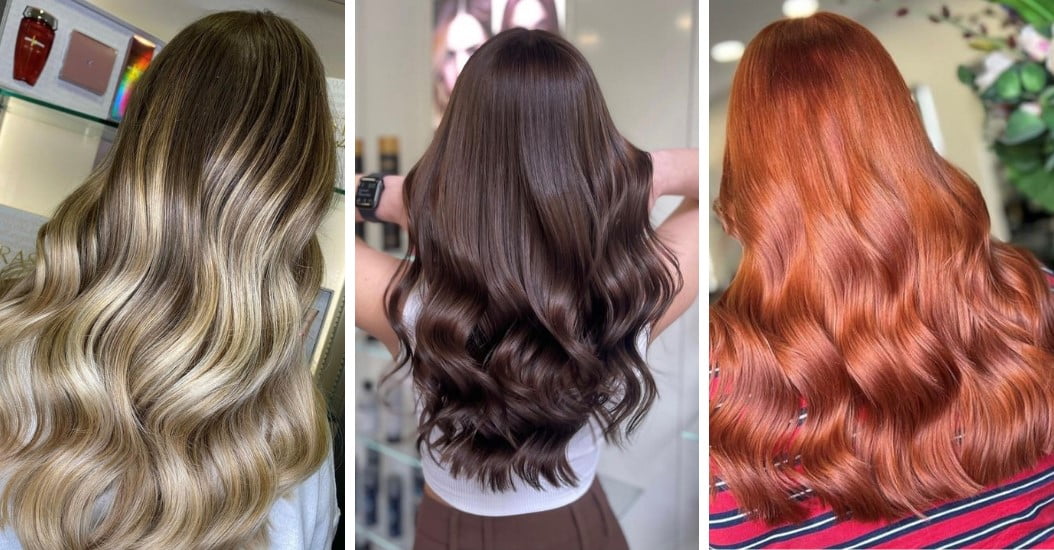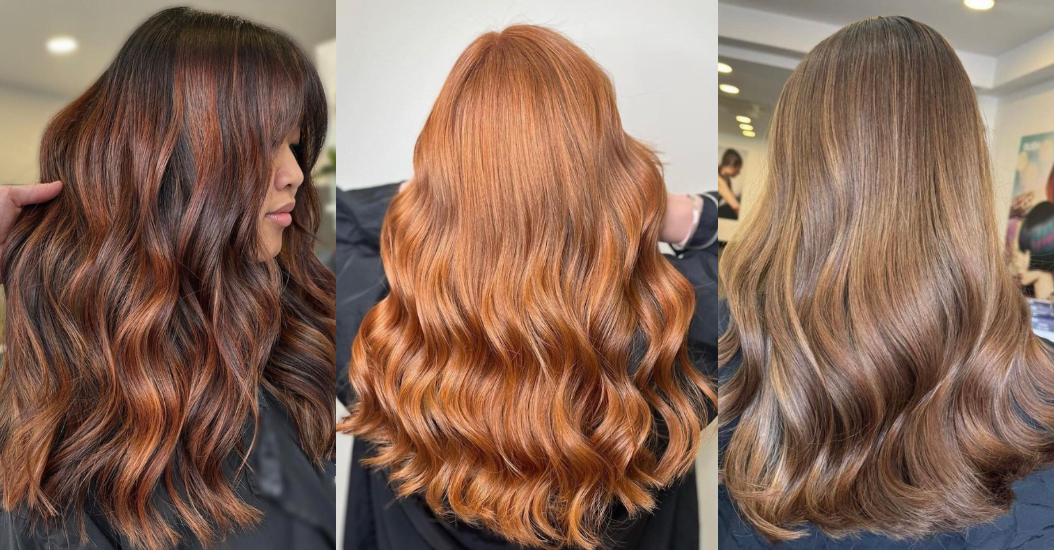Discover our ultimate guide to building a healthy hair care routine. No matter your hair type or hairstyle, check out our expert tips for beautiful hair today!
At one time or another, we’ve all been faced with starting over when it comes to our hair. Perhaps it’s a case of one too many trips to the bleach or saying ‘enough’ when it comes to chemically straightening our hair.
For others it might simply be time to start a haircare journey. Whatever you need, just know that the team at Rush have got you covered. There’s no need to be intimidated, we’re here with you all the way. So, let’s go!
Key Takeaways
- Identify your hair type and goals to choose the right products, treatments, and protective measures.
- Stick to a routine of cleansing, conditioning, treating, and detangling to keep your hair healthy and strong.
- Protect your hair by minimising dyeing, shielding from the sun, avoiding tight hairstyles, using natural remedies, and eating a healthy diet.
- Choose the right products for your hair type, including shampoos, conditioners, and deep treatments.
- Consult a stylist for personalised advice and keep your routine simple for the best results.
- Regularly check for product buildup and adjust your routine to maintain healthy hair.
What to think about before you build your Hair Care routine?
Building a haircare routine is very similar to creating a skincare regime – you need to look at what you’re working with, and where you want to be.
When it comes to your hair, this means you need to look at three specific things: your hair type, your hairstyle and your goals. Let’s look at each of these areas more closely.
Your Hair Type
You might not realise this, but there are there are four hair types, which each have their own subcategories. We’ve listed them below so you can decide which one sounds most like you.
Type 1a Hair – this is hair that’s super straight and fine. You might find it almost impossible to hold a curl and find that you’re often wishing it had a little more volume.
Type 1b Hair – this is slightly less straight and has a little more volume. You probably still find yourself reaching for hairspray a lot!
Type 1c Hair – this is poker straight hair that others would kill for! This is hair that will not curl, no matter what.
Type 2a Hair – you have a soft wave throughout your hair and often find yourself straightening it.
Type 2b Hair – you’re officially wavy and often like to play up that texture with salt sprays and dry shampoo.
Type 2c Hair – you’re as close to curls as can be, but still in wavy territory.
Type 3a Hair – welcome to the curl gang! You officially have some bounce to your curls but they are more of a loose spring.
Type 3b Hair – nice, round, bouncy curls that love moisture.
Type 3c Hair – these curls can be plucked and stretched and will bounce straight back.
Type 4a Hair – welcome to coily territory! Type 4 is the most common hair type for black women and people with afro hair.
Type 4b Hair – this is a super springy z-shaped coil that can be deceptively long! You might often find yourself using products or styling techniques aimed at elongating the curl.
Type 4c Hair – the most beautiful, most coily hair type of them all.
Your Hairstyle
Once you know your hair type, it’s time to consider how you like to wear it, and this is where you need to really get down to the details.
It might sound great to rock curls every day, but if those curls require a good amount of maintenance on the daily, that might not work if you have to be at work for 8am!
The same goes for wanting a poker straight bob if your natural Type 3c curls are desperate to be free.
That doesn’t mean that any style is impossible; it just means taking time out to think.
- Consider how much time you have and how much time you are willing to spend on your hair each day or week.
- Consider your budget – perhaps a bi-monthly cut and style is best as opposed to extensive colour work that requires you come in as soon as re-growth starts to show.
- Consider what you’ll need to maintain the desired look at home; is it just about products or do you need new styling tools too?
Rush expert tip: Sometimes it’s so easy to imagine what we’d like, from our point of view but there’s a lot to be gained by booking a consultation at the nearest Rush salon. Spending time with a stylist means you’ll get expert feedback on what suits your skintone, your face shape and your lifestyle.
Wondering why your hair is dry? Read our Why is My Hair So Dry? blog.
Your Hair Care Routine for healthy hair
1. Cleanse
Going back to the skincare model, it all starts with cleansing. If you have straight, fine hair, you might opt for lightweight shampoos, but if you’re a coily girl who loves to layer products, then you’ll benefit from a pre-shampoo and then a deep cleanse with a clarifying shampoo.
Having a clean scalp and hair means that your products are going to work more effectively and the pores on your scalp won’t become clogged or blocked up from too many products.
2. Condition
Once you’ve sufficiently cleansed, it’s time to focus on the number one healthy hair factor; hydration.
Again, it’s about assessing your hair type’s needs; you might have seriously curly hair that seems to drink up heavy and hydrating conditioners, but if you’re super fine, you might just need light hydration focused on your ends to avoid any greasy feeling.
A great option for straight and fine hair is a light leave-in conditioning spray that can be used as and when needed.
3. Treat
This is a really important part of any beginner’s haircare routine, because it is all about focusing on something specific to you.
This might mean a bonding oil for split ends, or a scalp treatment for irritated and dry skin. Think of these as topical treatments that you can use daily, often in the form of sprays and finishing oils.
A treat that most of us could do with is a weekly hydration mask – think of this as an intense take on your conditioning step. Sufficiently hydrated hair is far less likely to become dry, tangled and prone to breakage.
4. Detangle
By leaving out the crucial step of detangling your hair, you could experience much more hair loss, breakage and dryness. The key step to detangling correctly for all hair types is to do it while the hair is damp, but please use a wide tooth comb or tangle teaser!
This is not the time to use a dense brush – you will literally wrench the hair from your scalp and experience potential damage to not only the hair, but also the follicle.
Detangling is not about rushing; a great time to do it is when you’re at your conditioning stage because then you will be fully detangled by the time you’re ready to start using your styling products.
5. Prepare Before Styling
Now you’re almost ready to style, think about the products you need. If you have wavy hair and you want a voluminous blowout that lasts all day, you’ll want to use volumizing mousses and hairsprays.
If you’re type 4c and ready to undo your twist-out, you’ll be reaching for products that hydrate as well as a gel that offers hold to retain your curls for longer.
If products seem like a minefield you’re not quite ready for, feel free to reach out to your local Rush salon and ask for some expert advice!
6. Style
When it comes to styling your hair, it’s always going to be an experiment until you’ve found the right products and tools for you.
Hair is this amazing accessory that we all get to play with, just like our clothes! It’s all about what suits you and your lifestyle – most importantly, have fun and…
Now that we’ve covered the basics of building your hair care routine, let’s take it a step further. While consistency in your routine lays the foundation for healthy hair, protecting your hair from potential damage is equally important. By incorporating a few extra measures, you can keep your strands looking their best.
Protecting Your Hair
Your hair is your crowning glory, so safeguarding it from damage is essential. Here are some key steps to help you maintain strong, healthy hair:
Dyeing Hair as Little as Possible

While changing your hair colour can be fun, frequent dyeing can weaken your hair and lead to dryness or breakage. Try to minimise how often you dye your hair and opt for less harsh, ammonia-free dyes when possible. If you must color your hair regularly, make sure to follow up with deep conditioning treatments to restore moisture and strength.
Protecting Your Hair from the Sun

Just like your skin, your hair can suffer from too much sun exposure. UV rays can dry out your hair, fade color, and weaken the hair shaft. To protect your hair from the sun, wear a hat or scarf when you’re outside for extended periods, or use a hair product with built-in UV protection.
Not Pulling Your Hair Too Tight

Tight hairstyles can strain your hair and scalp, leading to breakage and even hair loss. Opt for looser styles, especially at night, to give your hair a break. When you do tie your hair back, try to keep it loose and natural. For more tips on how to protect your hair at night, check out our guide on how to protect your hair while sleeping.
Applying Natural Remedies to Your Hair

Sometimes, the best treatments are the simplest ones. Natural remedies like olive oil, coconut oil, honey, and tea can work wonders for your hair. These ingredients can help moisturize, nourish, and strengthen your hair naturally. For instance, a coconut oil mask can add shine and softness, while a rinse with green tea can boost hair health and reduce dandruff.
Eating Healthy

What you eat plays a big role in the health of your hair. A diet rich in vitamins and nutrients like fatty acids, B6, and biotin can promote hair growth and strengthen your strands. Foods like salmon, eggs, nuts, and spinach are excellent choices to include in your diet for healthier hair from the inside out.
Picking the Right Products
Choosing the right products tailored to your hair type and needs is crucial in maintaining a healthy hair care routine. Here are some tips to guide you:
- Choosing the Right Shampoo: Your shampoo should match your hair type. If you have fine hair, go for a volumizing shampoo. Curly or coily hair benefits from moisturising shampoos, while those with an oily scalp might prefer a clarifying shampoo that removes excess oil without stripping natural moisture.
- Conditioning Matters: Never skip conditioning! It’s essential to keep your hair hydrated and manageable. For fine hair, choose a lightweight conditioner that won’t weigh your hair down, while thick or curly hair may require a richer formula to keep strands soft and tangle-free.
- Deep Conditioning Regularly: Deep conditioning treatments are a must to keep your hair healthy and resilient, especially if you use heat tools or color your hair. Incorporate a deep conditioning treatment into your routine as needed—whether weekly or bi-weekly. For more tips, check out our blog on how to deep conditioning.
Remember, the right products can make all the difference in maintaining a healthy hair care routine, so take the time to choose wisely and invest in what works best for your hair type and goals.
Simple Hair Care Routine Tips
- Know your hair type before building a hair care routine: Different hair types have unique needs and require specific products and treatments to maintain optimal health and appearance.
- Keeping things simple will make your life easier. Focus on Cleansing, Conditioning and Treating and your hair will be healthy and happy.
- Be gentle to your hair: Wash your hair with lukewarm water instead of hot water, gentle towel dry your hair when wet and limit heat styling.
- When it comes to daily styling, never overload your hair. Get used to touching your hair and you will soon notice when you have product build-up or if you’ve used something that has too much oil or alcohol in it.
If in doubt, strip things right back and seek advice at your nearest Rush salon.
We all have to start somewhere and with the right products and advice, taking care of your hair will become second nature. If you ever feel stuck, your trusted experts at Rush are there to help.
Ready to start your healthy hair journey?
Ready to transform your look? Find a hairdresser near you or book your appointment ar Rush today!
FAQ's
What is the perfect hair care routine?
A routine that suits your hair type and lifestyle, including regular cleansing, conditioning, treating, and protecting.
What is the order of hair care routine?
Start with shampoo, then condition, treat specific issues, detangle, and style.
Do you need a hair care routine?
Yes, a routine keeps your hair healthy, strong, and looking great.
How can I maintain my hair all day?
Use the right styling products and consider touch-ups with a leave-in conditioner or spray.
How often should I deep condition?
Once a week or as needed, especially if your hair is dry or damaged.
Can I wash my hair every day?
It’s best to wash 2-3 times a week to avoid dryness.
How do I choose the right products?
Pick products based on your hair type—like volumizers for fine hair or moisturizers for curly hair.




